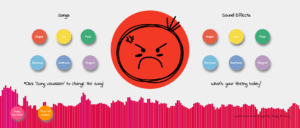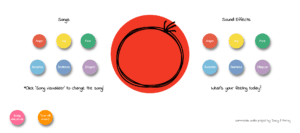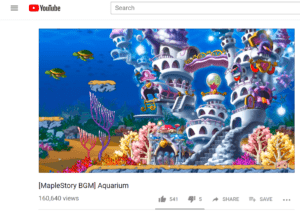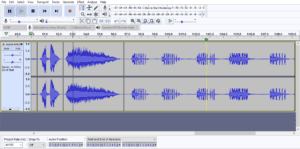For this project, Jon and I filmed each other while Jon was counting to 5 in a random order. Learning how to sync audio together as well as cutting the film to have different segments to display each other was quite a fun activity!
Week 7: “The Danger of a Single Story“ –Murray
In “The Danger of a Single Story”, I thought it was really interesting how Chimamanda Adichie talks about her life growing up in a multi-cultural environment, being raised by Nigerian parents but growing up in England. By having this multi-cultural experience, Adichi is able to have a wider perspective and knowledge on certain issues and is able to express that throughout her writing. In many ways, I think that applies to me. Because I also grew up in a multi-cultural environment having been raised by Chinese parents who immigrated to the USA. By having a multi-cultural environment, one will be able to truly understand the context of situations and have a better grasp of ideals rather than being misunderstood and will ultimately avoid confusion and miscommunication as well.
Week 7: Audio Project Documentation – Murray Lu
Link: http://imanas.shanghai.nyu.edu/~qc532/week6/audio/
Description:
Daisy and I basically agreed on everything while we were working on the Audio Project. We decided to create a project based on mood where certain sounds, noises, and colors would affect one’s mood. The way it worked was each “mood” you clicked was matched accordingly with it’s color associated with that mood. Furthermore, each song we chose was based on the mood you would feel from listening to the song. For instance, for “anger”, we chose a hardcore punk song that was full of angry vibes. After that, you could choose a certain human sound effect associated with a mood to change the atmosphere of the song. For example, if you chose the “angry” sound effect with the “angry” song, there would be screaming in the background that would work well with the “angry” song. But if you choose a “sadness” sound effect with the “angry song”, the entire atmosphere of the song would change or not feel right.




Process:
Daisy was in charge of the coding for the Audio Project and also came up with the idea for the project while I was in-charge of finding the music and sounds for the project as well as editing and remixing the audio through Audacity (although Daisy did give me some suggestions and advice throughout the process).
I particularly listen to a lot of music, played in several bands before and have even done music journalism in the past so I thought with my experience around music, I would be able to do well for the audio part of the project. I chose songs who’s lyrics were centered around a particular mood (such as “Riot Squad” by Bad Brains for “Anger”) and then also searched up human sounds that one would make while experiencing that certain mood (such as the sound of someone yelling in frustration for “Anger”)
For the human sound effects, I would first find a recording of it on YouTube first and then copy+paste the url into a YouTube to mp3 converter online. After doing this, I would upload the url into Audacity and then I began to experiment with the mp3. Somethings I did to edit the recording was to change the speed, pitch, distortion, amplification, and tempo for the audio. The way the edited mp3 would sound was it would play the original audio first, then it would play different edited versions of the audio one after another throughout the entire audio.While experimenting with the audio, I did encounter some problems. One problem I encountered was that for each audio portion that was edited, the volume for each audio wasn’t always consistent with each other. I realized that when I added the echo effect to the audio, it would make the audio louder and louder so I removed that effect from the Audio Project. Not only that, but I figured out that by choosing the “Normalize” effect on Audacity, it would make the frequency for each audio equal which would make the volume for each audio consistent with each other as well.




Here is a screenshot of the coding that my partner Daisy did for the project:

We made it a priority to start this project early, because for my last project, it was done a bit late so we definitely wanted to prepare early this time. By doing this, we were definitely able to establish everything we wanted and find out problems in our assignment early on so we could fix and avoid them by the time we turned it in.
Post-Audio Project : I felt really happy with the way the project turned out in the end, cause originally I wasn’t too sure if mixing a human sound effect would work well with a song. However, the two different sound recordings worked a lot better than I had expected and I felt that the project was really able to convey what we wanted to express. Overall, I really enjoyed this project and definitely learned how to use a new application: Audacity.
Week 6: Response to Molotov Man – Murray Lu
I love how for art, especially for modern art, the quality of a piece of art piece or painting isn’t dependent on how similar it looks to the real thing, but instead is subjective to the audience’s mindset and what the artist themselves initially intended for the art piece to convey. For instance, one of my favorite art pieces ever is “Guernica” by Picasso. Even though the painting looks nothing like something that is real, the colors and visuals of the image convey an atmosphere like no other and one is immediately able to tell that the art piece represents and symbolizes the chaos and destruction that is involved with war. From this art piece, it has become one of the most powerful anti-war pieces. The Molotov Man reminds me of Guernica a lot, because even though Molotov Man does not directly look like the real image that one may see in a photograph, the symbolism and expression in the painting gives a feel to the audience that wouldn’t be as directly show cased if the image was merely a giant picture taken by a photograph. By knowing the background behind why the Molotov Man painting was created, one is better able to understand the true purpose of the painting and see what the artists original motives were as well.
Week 6: Response to Ecstasy of Influence – Murray Lu
I found this post to be quite interesting because it talks about how people will use ideas from others to display or showcase in their own work but by using other people’s ideas, they aren’t copying or “plagiarizing” it, their just using it as an outlet for their own expression. Reading the article really reminded me of a TED Talk that I saw that featured Mark Ronson called “How Sampling Transformed Music”. In the TED Talk, Ronson explains that “sampling isn’t about ‘hijacking nostalgia wholesale,’ it’s about inserting yourself into the narrative of a song while also pushing that story forward”. The video really resonated with me because as creatives, it’s totally normal to have inspiration from others and to showcase it in your own work, but by directly using that inspiration, you are extending upon it and adding a totally new direction, kind of like passing the torch down from one generation to another. The article also reminded me of my senior quote that I used in high school: “Good artists copy, great artists steal” – Picasso. I loved this quote because it means that great artists are about to steal the ideas of others and use that to showcase their own work and originality, rather than copying an inspiration that one may have of someone else and make it appear blatantly obvious. I think this article is especially important for our Audio Project, because we will be using audios from other sources and directly showcasing that in our work and adding our own artistic direction upon that.